1. Biggest lufenuron manufacturer
2. Appointed pesticide enterprise by NDRC
3. Own ISO 9001 quality certification
Lufenuron 97% TC,98% TC 5% EC
Common name: Lurfenuron
Chemical name (IUPAC):
(RS)-1-[2,5-dichloro-4-(1,1,2,3,3,3-hexafluoropropoxy) phenyl]-3-(2,6-difluoro = benzoyl) urea
CAS NO.: 103055-07-8
Empirical formula: C17H8Cl2F8N2O3
Uses: Insect growth regulator for control of Lepidoptera and Coleoptera larvae on cotton, maize and vegetables; and citrus whitefly and rust mites on citrus fruit. Also for the prevention and control of flea infestations on pets.
Specification: 97%TC, 5% EC
Packing:
97%TC | 25kg/drum or according to special requirement. |
5% EC | 200 L/drum or according to special requirement. |
NOMENCLATURE
Common name lufenuron (BSI, pa E-ISO, INN)
IUPAC name (RS)-1-[2,5-dichloro-4-(1,1,2,3,3,3-hexafluoropropoxy)phenyl]-3-(2,6-difluorobenzoyl)urea
Chemical Abstracts name N-[[[2,5-dichloro-4-(1,1,2,3,3,3-hexafluoropropoxy)phenyl]amino]carbonyl]-2,6-difluorobenzamide
CAS RN [103055-07-8] Development codes CGA 184699 (Ciba-Geigy)
PHYSICAL CHEMISTRY
Composition Tech. is ³98%. Mol. wt. 511.2 M.f. C17H8Cl2F8N2O3 Form Colourless crystals. M.p. 168.7-169.4 °C (OECD 102) V.p. <4 ´ 10-3 mPa (25 ºC) (OECD 104) KOW logP = 5.12 (25 ºC) (OECD 117) Henry <3.41 ´ 10-2 Pa m3 mol-1 (calc.) S.g./density 1.66 at 20 ºC (OECD 109) Solubility In water <0.06 mg/l (25 ºC). In ethanol 41, acetone 460, toluene 72, n-hexane 0.13, n-octanol 8.9 (all in g/l, 25 ºC). Stability Stable in air and light. In water, DT50 32 d (pH 9), 70 d (pH 7), 160 d (pH 5). pKa >8.0
APPLICATIONS
Biochemistry Inhibits chitin synthesis. Mode of action Acts mostly by ingestion; larvae are unable to moult, and also cease feeding. Uses Insect growth regulator for control of Lepidoptera and Coleoptera larvae on cotton, maize and vegetables; and citrus whitefly and rust mites on citrus fruit, at 10-50 g/ha. Also for the prevention and control of flea infestations on pets. Formulation types EC. Compatibility Not compatible with pesticides with alkaline reaction (lime sulfur, copper).
MAMMALIAN TOXICOLOGY
Oral Acute oral LD50 for rats >2000 mg/kg. Skin and eye Acute percutaneous LD50 for rats >2000 mg/kg. Non-irritating to eyes and skin (rabbits). Non-sensitising to skin (guinea pigs). Inhalation LC50 (4 h, 20 ºC) for rats >2.35 mg/l air. NOEL (2 y) for rats 2.0 mg/kg b.w. daily. ADI 0.01 mg/kg. Toxicity class WHO (a.i.) III EC hazard (R43)
ECOTOXICOLOGY
Birds Acute oral LD50 for bobwhite quail and mallard ducks >2000 mg/kg. Dietary LC50 (8 d) for bobwhite quail and mallard ducks >5200 mg/kg. Fish LC50 (96 h) for rainbow trout >73, carp >63, bluegill sunfish >29, catfish >45 mg/l. Daphnia Toxic to Daphnia. Algae Slightly toxic to algae. Bees LC50 (oral) >197 mg/bee. LD50 (topical) >200 mg/bee. Worms No adverse effects on earthworms.




